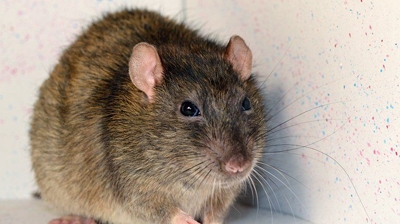
Stinging Insect Identification & Prevention
What You Need To Know About Stinging Insects
Stinging insects are year-round pests that emerge during the spring and summer months. They are arthropods known for carrying venom and possessing stingers, which they use to hunt for food.

Frequently Asked Questions About Stinging Insects
Have questions? We are here to help. Still have questions or can't find the answer you need? Give us a call at 623-321-2992 today!
-
What are stinging insects?
Here are some of the most common stinging insect species in the Glendale area:
Africanized Bees - Known as "killer bees," they attack in great numbers when they feel threatened. They are golden-yellow with darker bands of brown on their oval-shaped bodies. They have six legs and antennae and measure around ½ an inch. They are smaller than domestic honey bees and live in small colonies.
Carpenter Bees - Carpenter bees burrow inside wood, lay eggs, and grow their populations, causing structural damage. They attract other wood-destroying insects by providing easy access to wood sources. Their hatching larvae also attract woodpeckers, which proceed to make holes in the wood looking for them.
Leafcutting Bees – These bees are comparable in size to honey bees, though they have larger heads than most bees. They have extra muscles they've developed to chew through leaves, and female leafcutters have teeth. These bees carry pollen under their abdomen and play a vital role in pollination.
Mud Daubers - These wasps are black with pale markings and sometimes a blue metallic shine. They have antennae and long, slender bodies with a thread-like waist and six legs. Their wings can be dark or clear, and they measure between 1/2 and 1 inch in length. They tend to emerge in warmer weather. They're most active in the daytime, and you'll often find them near puddles and other water sources collecting mud to build their nests.
Paper Wasps - Paper wasps have slender, narrow-waisted bodies about an inch long. They're usually an orange/reddish-brown color, and they have yellow markings on their head, thorax, and a band on their abdomen. They have smoky black wings that are folded together lengthwise alongside their bodies, and unlike bees, their bodies are not fuzzy. Paper wasps have round nests made of upside-down paper combs that are water-resistant.
Sweat Bees – These solitary bee species live alone in nests underground. They measure around 1/4 to 3/4 of an inch and have metallic colorations varying from green, black, blue, and purple. These bees help pollinate commercial crops and wildflowers. They are attracted to the salt in our sweat but aren't aggressive and pose no real threat.
Wasps – These sometimes aggressive insects are usually brown with yellow markings on their head, thorax, and abdomen. Their bodies are slender, long, and have narrow waists, and they have dark wings folded lengthwise down their body. They measure 3/4 to 1 inch in length and are distinguishable by their thinner, more elongated shape. Their segmented bodies have minimal hair, two sets of wings, and six legs. They are bigger than most bees but smaller than most hornets.
Since stinging insects are common in the area, it's a good idea for property owners to be aware of the dangers they present. Read on to discover the threat of stinging insect activity.
-
Are stinging insects dangerous?
Everyone reacts differently to stinging insects, depending on their sensitivity and allergies. These pests can cause severe allergic reactions in those they sting, and sometimes their reactions are so serious they can lead to anaphylactic shock.
-
How do I protect my property from stinging insects?
When it comes to protecting yourself from these pests, there are a few preventative measures you can take to deter stinging insects from nesting on your property:
Cover up any holes in the ground using cement or grass.
Cover up piles of compost and keep your garbage cans tightly sealed.
Get rid of any food sources and don't leave them outside.
Use caulk to seal up cracks and crevices around the porch.
When prevention methods do not work, contacting your local pest experts is the most reliable way to protect your property against stinging insects. Contact H&N Pest Control today for quality stinging insect control and prevention treatments that work.
When it comes to protecting yourself from these pests, there are a few preventative measures you can take to deter stinging insects from nesting on your property:
Cover up any holes in the ground using cement or grass.
Cover up piles of compost and keep your garbage cans tightly sealed.
Get rid of any food sources and don't leave them outside.
Use caulk to seal up cracks and crevices around the porch.
When prevention methods do not work, contacting your local pest experts is the most reliable way to protect your property against stinging insects. Contact H&N Pest Control today for quality stinging insect control and prevention treatments that work.





